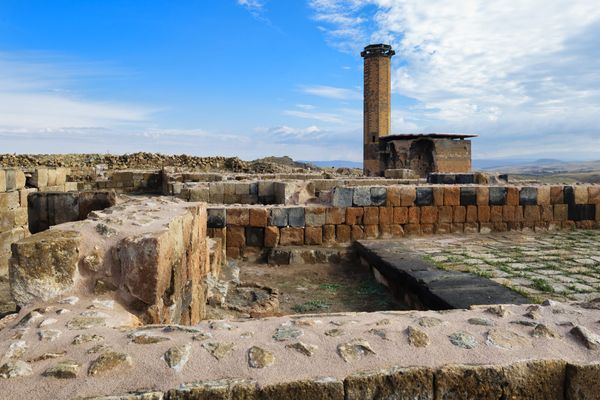Türkiye, long known as the cradle of civilisations, is cementing its status as a global leader in archaeological research with the declaration of 2024 as the “Golden Age of Turkish Archaeology.”
Under the leadership of the Ministry of Culture and Tourism, the country has embarked on an unprecedented number of excavation and restoration projects, making this a landmark year for the exploration and preservation of Türkiye’s rich cultural heritage. With year-round excavation efforts, Türkiye continues to unearth extraordinary artifacts that reveal fresh insights into its ancient civilisations, offering a deeper understanding of Anatolia’s historical and cultural heritage. In 2024 alone, several remarkable finds have captured global attention, highlighting the richness of Türkiye’s archaeological landscape.
Most Significant Archaeological Highlights of 2024
Scylla Statues from the Ancient City of Laodicea (Denizli)
These stunning statues depict the mythological sea monster Scylla from Homer’s Odyssey, along with the figures of Odysseus and his companions. Still adorned with their original Hellenistic baroque paint, the statues offer valuable insights into ancient Greek mythology and artistic expression.
2,000-Year-Old Zeus Head in Aphrodisias (Aydın)
A monumental Zeus head sculpture was uncovered at the UNESCO World Heritage site of Aphrodisias. Nearly intact, the statue showcases intricate details and provides a unique look into the religious practices and sculptural art of ancient Anatolia.
13,000-Year-Old Bone Sewing Needle in Direkli Cave (Kahramanmaraş)
This well-preserved bone sewing needle, dating back 13,000 years, was discovered in Direkli Cave, linking the region’s prehistoric past to its modern-day textile industry. It’s a crucial find for understanding the evolution of craftsmanship in ancient Anatolia.
Running Wild Donkey Carving at Karahantepe (Şanlıurfa)
Part of the Taş Tepeler Project, this carving of a wild donkey in motion is the first depiction of an animal in such detail from the Neolithic period, offering new perspectives on the artistic and cultural capabilities of one of the world’s oldest civilisations.
3,900-Year-Old Handprints in Kayalıpınar (Sivas)
Handprints believed to belong to the Assyrian trade colonies were discovered in the ancient Hittite city of Kayalıpınar. These imprints provide a rare and direct connection to individuals who lived nearly four millennia ago, offering a unique glimpse into the lives of ancient traders.
Alongside these findings, Türkiye continues to champion the repatriation of looted artifacts, further demonstrating the country’s dedication to safeguarding its cultural treasures. Recent efforts have resulted in the return of 14 significant archaeological and ethnographic artifacts from the United States, including bronze heads, ceramics, and Ottoman-era daggers.
With more than 750 archaeological studies expected by the end of 2024 and ambitious plans to increase this number to 800 by 2026, Türkiye is well on its way to achieving as much archaeological progress in the next four years as it has in the past 60. As the richness of Anatolia’s past continues to emerge, Türkiye is setting the stage for new revelations in history, culture, and heritage conservation.


